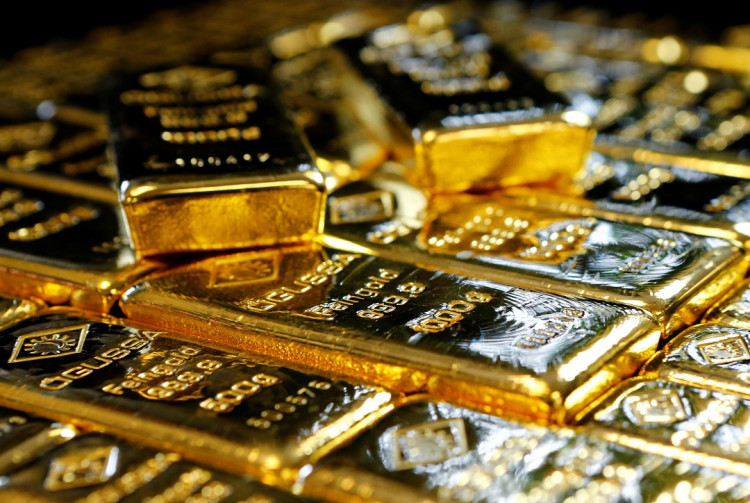Gold prices soared to unprecedented levels this week, reflecting heightened investor anxiety over the health of the U.S. economy and expectations of further interest rate cuts by the Federal Reserve. The most actively traded gold futures contract reached a record $2,687.30 per ounce on Tuesday before retreating slightly, marking a roughly 30% increase since the beginning of the year.
The rally in gold has outpaced the S&P 500's 20% gain over the same period, signaling a shift in investor preference toward traditional safe-haven assets amid economic uncertainty. "There's really, at this stage, no way to think about gold other than positively," said Will Rhind, chief executive of GraniteShares. "Investors are seeking refuge as concerns mount over the U.S. economy's trajectory."
Weak economic data released this week has further fueled the surge in gold prices. The Conference Board reported that U.S. consumer confidence fell to 98.7 in September, down from an upwardly revised 105.6 in August-the largest decline in three years. The unexpected drop has raised concerns about consumer spending, a critical component of economic growth.
"There is a nagging concern on the part of investors that perhaps this 50 basis point cut really is a crisis cut and that there's more weakness in the U.S. economy than can be seen right now," said Kristina Hooper, chief global market strategist at Invesco. The Federal Reserve slashed interest rates by a half percentage point last week in an effort to preempt further labor market weakness.
The unemployment rate stood at 4.2% in August, up from 3.8% a year earlier, signaling potential softening in the labor market. Traders are now betting on more than three-quarters of a point of easing by the Fed this year, with the central bank penciling in an additional half percentage point cut before year's end and a full percentage point of easing in 2025.
Lower interest rates enhance the appeal of gold, which does not offer interest, by reducing the opportunity cost of holding the metal relative to yield-bearing assets like Treasury bonds. The yield on the 10-year U.S. Treasury note hovered around 3.7% on Tuesday, down from over 4% just months ago, making gold a more attractive investment.
Central banks have also contributed to gold's ascent by increasing their reserves, particularly in countries like China, Turkey, and India. These nations are diversifying away from the U.S. dollar amid geopolitical tensions and global economic shifts. Strong central bank purchases have provided a robust underpinning for gold prices, according to market analysts.
Silver, often considered gold's sister metal, has mirrored gold's rise, jumping approximately 34% this year. Used extensively in industrial applications such as electronics, solar panels, and clean energy technologies, silver benefits both from its status as a precious metal and its industrial demand. "The move in industrial commodities is likely also providing an additional boost," said Zhong Liang Han, an analyst at Standard Chartered PLC.
Investors are closely watching upcoming U.S. economic data, including the personal consumption expenditures (PCE) index and jobless claims due later this week, for further indications of the Fed's monetary policy direction. Federal Reserve Chair Jerome Powell is scheduled to speak on Thursday, and his comments will be scrutinized for any hints of future rate cuts.
Market strategists predict that gold's upward trajectory may continue if economic indicators remain weak. "Gold bulls should have little problems reaching the $2,700 mark by end-2024," said Han Tan, chief market analyst at Exinity Group. "The precious metal should see even stronger tailwinds towards $3,000 if the window slams shut on a soft landing for the U.S. economy."
Geopolitical factors are also playing a role in boosting gold's appeal. In the Middle East, Lebanon's Hezbollah claimed it fired a rocket targeting Mossad spy agency headquarters near Tel Aviv, escalating regional tensions. "The robust gold demand is also due to concerns about an expanding conflict in the region," noted investment bank Panmure Liberum in a recent report.
While gold and silver continue to attract investors, some analysts caution that the metals' rallies are also a reflection of broader market uncertainties. "The rallies in gold and silver suggest that markets are still on edge about the U.S. economy's health, despite fresh highs in the stock market," said Ms. Hooper of Invesco.






